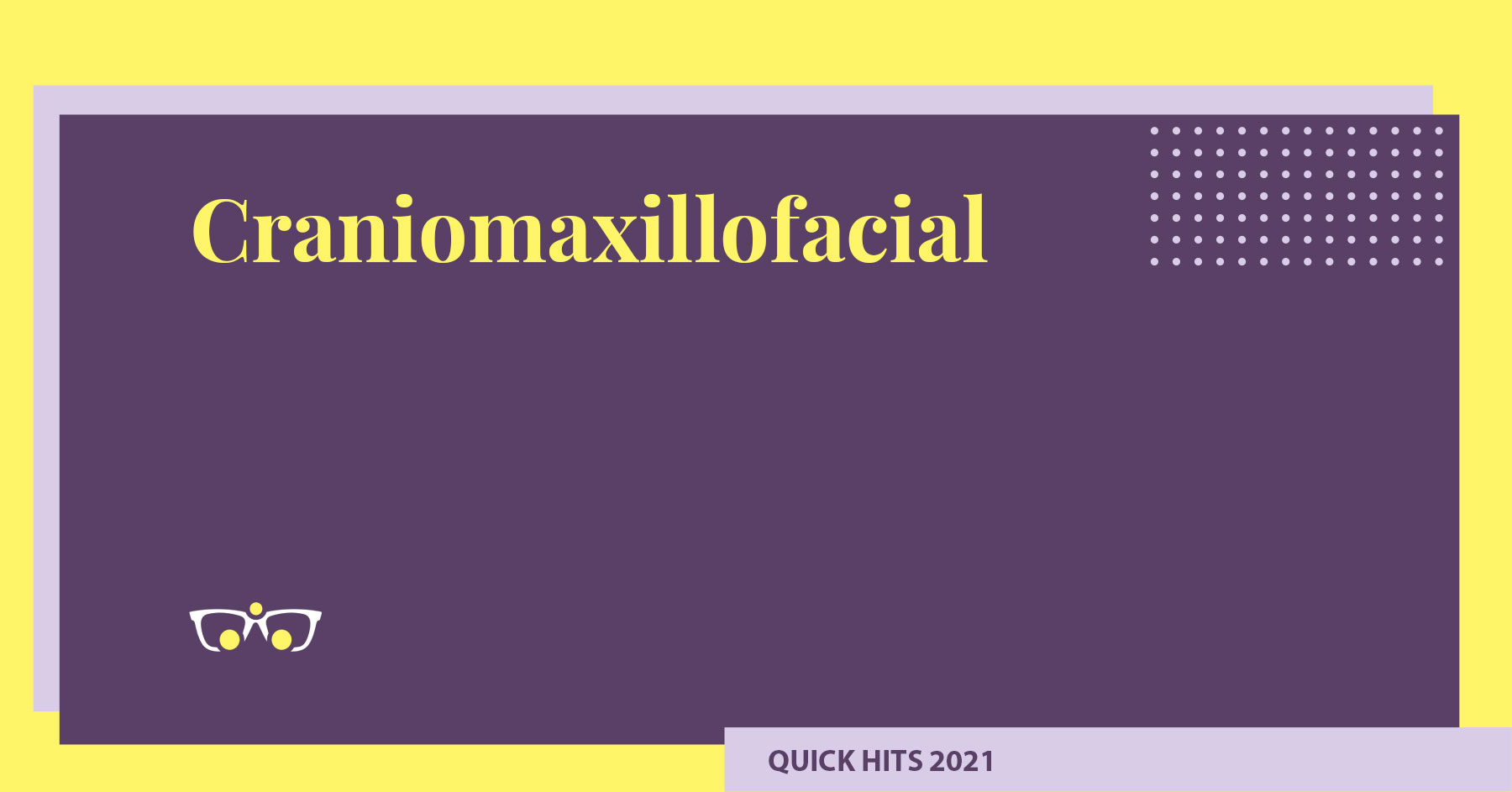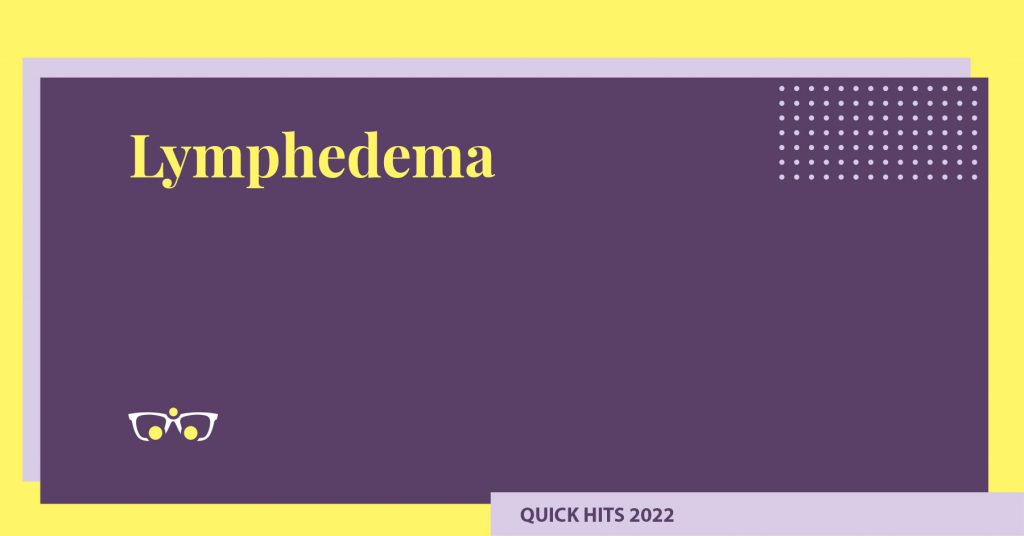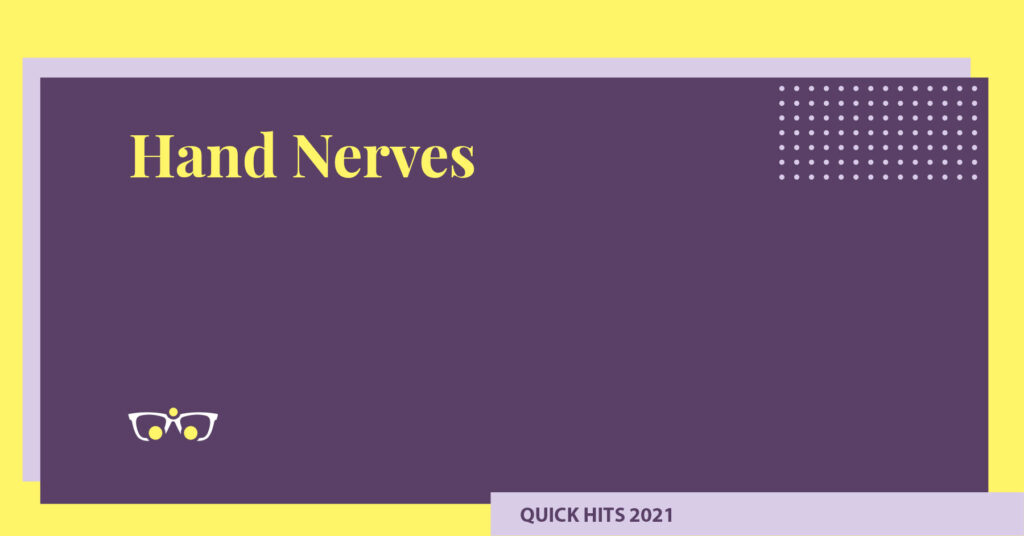Intraoperative CT: The use of intraoperative CT scans optimize plate positioning in maxillofacial trauma- specifically orbital floor fractures (decreased enophthalmos, accuracy of plate positioning, and decreased reoperation rate)
-orbital floor fractures risk to change the volume of the orbit which can affect globe positioning (enophthalmos); indications for surgery include vertical globe dystopia, enophthalmos, and globe entrapment
Pfieffer syndrome: presents with cloverleaf skull deformity, midface retrusion, severe exorbitism, respiratory compromise and broad thumbs. Neonatal intervention includes addressing these in the form of tracheostomy for adequate ventilation, decompressive craniectomy to prevent sequelae of intracranial hypertension, and temporary tarsorrhaphies to prevent keratopathy
Informed consent: can present itself when the minor and guardians disagree on surgical intervention. One should openly discuss the disparity between the parent’s and patient’s goals to better understand respective motivation
Angle class I: mesiobuccal cusp is in line with the buccal grove of the mandibular first molar
Angle class II: maxillary mesiobuccal cusp is anterior to the mandibular buccal groove
-
- Division 1: minimal crowding of maxillary teeth and proclination of the upper central incisors
- Division 2: central incisors retroclined
</ul.
Angle class III: maxillary mesiobuccal cusp lies posterior to the mandibular buccal groove
Overbite: vertical overlap between the incisal surfaces of the central maxillary and mandibular incisors
Overjet: horizontal discrepancy in the position of the maxillary and mandibular central incisors
Levator veli palatine: originates on the medial aspect of the eustachian tube from the petrous temporal bone and runs transversely in the middle 50% of the velum, joining the paired contralateral muscle. Its purpose is to elevate the palate.
In cleft palate the muscles are oriented more sagittaly and insert into the posterior edge of the hard palate and tensor aponeurosis laterally
Recent meta-analysis have demonstrated the lowest complication rates when treating isolated mandibular angle fractures (noncomminuted) with ORIF via one miniplate; any comminuted fractures or atrophic fractures should be used with a reconstructive plate
Timing of alveolar bone grafting: if lateral incisor is missing, should be performed when the canine root is one half to 2/3 developed which allows canine to erupt through the graft. IE in mixed dentition, before eruption of the permanent canine (typically between 8-12 years)
Branchial Arches:
1: maxillary artery, trigeminal nerve, muscles of mastication, anterior belly of the digastric, tensor tympani, tensor veli palatine, mylohyoid, mandible, incus/malleus, maxilla, vomer, zygoma, temporal bone
- Tragus, root of the helix, and superior helix are derived from the three anterior hillocks of the first pharyngeal arch
- First pouch is external auditory canal and middle ear space
2: stapedial and hyoid arteries, facial nerve, muscles of facial expression, stapes, styloid process, lesser horn of hyoid, crypts of palantine tonsils
- The antihelix, antitragus, and lobule derived from the posterior hillocks of the second pharyngeal arch
- Second pouch is the tonsillar fossa
3: common carotid, internal carotid, glossopharyngeal nerve, stylopharyngeus, greater horn of hyoid, thymus, inferior parathyroid glands
- Third pouch inferior thyroid gland and thymus
4: right proximal subclavian artery, arotic arch, vagus nerve, superior laryngeal nerve, intrinsic muscles of levator veli palatine, cricothyroid muscles, laryngeal cartilages, superior parathyroid glands
- Fourth pouch is associated with superior thyroid gland and thyroid gland
Buccal fat pad flaps: good for mucosal defects in palatal closure (good for nasal lining if furlow z plasty does not close)
– vomer flaps are useful for nasal lining for closure of the hard palate but are not useful for nasal lining of the soft palate
Midline lesion in infant -> next step for workup should be MRI to rule out intracranial extension -> could be dermoid cyst, hemangioma, or encephalocele
Infantile hemangioma: stains for GLUT-1
Parry-Romberg: progressive hemifacial atrophy associated with ocular and neurologic symiptoms. Requires workup with ophthalmologist to determine if the patient has ocular involvement.
– in patients that require free flap reconstruction, hematoma was the most common complication
Pediatric mandibular fractures: A longer appearing tooth is an example of retrusive luxation (versus intrusive luxation where the tooth is impacted). Arch bars may be used in pediatric dentition. Circummandibular wiring may be used in peds mandibular fractures. Plating may be used in mixed dentition as long as it is in areas of erupted teeth
-AO indications for tooth removal in mandible fracture: fractured tooth roots, tooth that has been luxated from its socket, tooth that is interfering with reduction of fracture, advanced dental carries that would carry a risk for infection/abscesses, advanced periodontal disease, teeth with pre-existing abnormalities
Botox for masseter hypertrophy: effects can last for years, can have temporary decrease of mastication force, significant reduction of masseter volume occurs, this is an off label use for botox
- FDA use includes bladder dysfunction, migraine, glabellar lines, primary axillary hyperhidrosis, blepharospasm, strabismus, cervical dystonia, upper limb spasticity
Remember clefts and their extensions
0-14
1-13: eyelid, eyebrow and canthal structures are intact, medial brow may be displaced inferiorly, may show as frontal encephalocele
2-12
3-11: originates in the medial orbit and involves the upper lid as a coloboma or blepharon. Can also extend into the eyebrow and up to the frontal hairline
- 0-7 occur on lower half of face, 9-14 occur in the upper hemisphere
- Paramedian clects
- Cleft 0: can have deficient or excess like bifid nose, or frenulum, hypertelorism, deficiency includes absent premaxilla with secondary palate cleft and absence of nasal bones (hypotelorism)–> 14 is a continuation of this; contact between dura and ectoderm through foramen cecum
- Cleft 1: CL/CP
- Cleft 2: hypoplastic ala, rare
- Oronasalocular clefts: 3,4,5
- Cleft 3: common, alar base superiorly displaced and nose foreshortened, lacrimal system blocked, colobomas, globe malpositioning, direct communication oforal/nasal/ orbital cavities, displaced medial canthus; inferiomedial orbit is absent
- Transverse through lateral incisor and the canine and extend into the floor of the nose, through nasolacrimal system, and orbital floor–> involves medial canthus!
- Frontonasal/maxillary failed merging can result in tessier 2,3,4
- Failed maxillary and medial nasal process can result in CL
- Proboscis lateralis: failure of fusion of lateral and maxillary nasal process
- Cleft 4: lip/orbit (nose uninvolved)-tracks medial to infraorbital nerve, begins at philtral colun, courses laterally to the alar margin, can affect medial lid and disrupt nasolacrimal duct –> resulting in epiphoria
- Cleft 5: involves oral, cheek (maxillary sinus) and orbital cleft- rarest
- Lateral to the infraorbital nerve
- Cleft 3: common, alar base superiorly displaced and nose foreshortened, lacrimal system blocked, colobomas, globe malpositioning, direct communication oforal/nasal/ orbital cavities, displaced medial canthus; inferiomedial orbit is absent
- Lateral clefts
- Cleft 6: lower lateral orbit, colobomas
- Cleft 7 OR hemifacial microsomia: most common of all clefts, males, disruption of stapedial artery, zygoma, maxilla, mandible affected, paresis V/VII
- Begins at oral commisure (macrostomia) –> extends towards ear runs through maxillary second molar (stops at masseter) –> can be skin tag or microtic ear
- Maxilla, ramus, zygomatic body, cranial base, open bite (also involves orbit)
- Likely from mandibular and maxillary processes not fusing
- Zygomatictemporal suture is the center
- Lateral facial clefts include 7-9 and hemifacial microsomia
- Cleft 8: always involves orbit, rare, Goldenhaar, typically with other syndromes, colombas, zygoma hypoplastic
- Cleft 9: encephaloceles, rare, lateral thrid of lid and brow, CNVII to forehead and upper eyelid, hypoplastic sphenoid –> can be extension of facial cleft 5
Marginal mandibular nerve vs cervical branch of facial nerve: both impair lower lip depression, causing decreased lower tooth show on smile. Marginal mandibular affects lip eversion and pouting (full dentured smile and pout)
Ear Anomalies: Cryptotia- deformity of the ear in which the superior helical rim is buried beneath the skin of the scalp (treated with elevation and skin grafting). Lop is an ear that is constricted and has overhang or hooding of superior helical rim. Crumple ear is form of constricted with variable cartilage abnormalities. Stahl: has third crus
Cranioplasty: any calvarial defect >6cm should be reconstructed. Titanium makes surveillance of post op cancerous lesions difficult. PEEK is radiolucent. BMP-2 contraindicated in cases of malignancy due to risk of tumorigenesis. Calcium phosphate is only used for small defects.
The lateral incisor is most prone to being affected in the area of a cleft (frequently missing, or delayed)
Congenital epulis: rare benign tumor of the oral cavity that is found in newborns. Considered granular cell tumor that may lead to mechanical obstruction, resulting in difficulty eating or respiratory distress (large tongue)
Ear Reconstruction: most common complication after porous polyethylene microtia recon is exposure of the implant
Nasal recon:
– think about layers that need reconstruction. (composite, cartilage only etc). Composite grafts are most successful when under 1cm. a good donor site for alar rim and soft triangle includes the full-thickness helical root composite graft with cartilage limb extensions
Head and neck reconstruction: venous couplers significantly decreased complication rate over using hand sewn anastomosis. Increased risk of failure with muscle only flaps over fasciocutaneous or osteocutaneous flaps. No difference in supercharging, multiple perfs, or orientation of anastomosis
Rabies vaccination: Unknown status should receive human rabies IG if vaccination of dog canot be confirmed. This is injected into the wounds, as well as routine vaccination. Should be ideally given on same day as bite.
Lacrimal apparatus: initial management of lacrimal disruption of placement of stent through the canaliculi into the lacrimal duct, and into the nose. The exit point is the valve of hasner (below the inferior turbinate)
– frontal, maxillary, and anterior ethmoid sinus cells drain into middle meatus, just below the middle turbinate
Ludwig angina: presents with drooling, protruding tongue, and woody edema of the submandibular region (deep space infection of the floor of the mouth). Source is periapical abscess (molar in origin)
-treatment is ICU, abx, surgical drainage, airway alert
Facial nerve lacerations: follow peripheral nerve principles. Outcomes optimal if the repair is performed within 6 months of injury. 12 months is the maximum delay where functional recovery would be expected
Orbital box osteotomy: inferior orbital fissure serves as starting point and ending point for orbital box osteotomy since only temporal fat is within this fissure (think about what important structures are where)
Facial compartments: masseteric or submasseteric space (bordered by masseter muscle and ascending ramus of mandible-below the arch); pterygomandibular space (formed by the medial pterygoid muscle and ascending ramus); superficial temporal space (formed by the temporalis fascia and temporalis muscle-above the arch); deep temporal space is formed by temporalis muscle and calvarium
AMT flap: is a bail out option with ALT does not have adequate perforators (5%). AMT perforator between the rectus femoris and vastus medialis arises from the descending branch of the lateral circumflex artery (some can arise immediately off of SFA)
Segmental mandibulectomy: full portion of the mandible is taken, performed when there is cortical invasion of SCC
Marginal mandibulectomy is performed when cancer does not invade cortical bone (abuts)
Jejunal flap versus ALT for laryngopharyngeal defects: both have been used to restore continuity of hypopharynx and cervical esophagus following laryngopharyngectomy
- Jejunal has become less popular due to ALT lower donor site morbidity, higher rate of feeding tube independence, and equivalent flap loss rates; voice production with TEP is considered superior.
- jejunal flap benefits include more straightforward inset, fistula rates higher for ALT
Submucous cleft palate: bifid uvula, notch of the hard palate, zona pellucida. Only a small number of these patients need surgery. If child is developing appropriately, wait until at least 2.5 years to evaluate.
- main reason to recommend VPI procedure is for hypernasal speech
- in a 17 year old, normal soft palatal length is 32mm and normal nasopharyngeal depth is 24mm, gap of 5mm cannot be adequately corrected with furlow palatoplasty or sphincter pharyngoplasty (gap >5mm indication for P flap)
Pleomorphic adenoma: typically occurs in the parotid gland- benign lesion with recurrence rate of 6-15% (10%).
RICH (rapid involuting congenital hematoma): large and fast flow, can cause high-output cardiac failure. Picture showed large hemangioma or vascular malformation on neck. X ray and MRI completed with lesion highlighted. Should work up with echocardiogram to evaluate if patient needs cardiac support.
Dermoid cyst: soft, fixed lateral brow mass, slow growing. (most common lateral brow mass)
Otoplasty:
- Mustarde suture- non absorbable suture placed over a weakened cartilage structure to create the antihelical crease (sterntrom scratches posterior cartilage to weaken the memory)
- Furnas: conchal setback sutures to rotate the ear and decrease the angle between concha and mastoid 25-35 degrees
Mandibular reconstruction: fibular flap appropriate especially for large segmental reconstruction (ramus/ramus); other options for smaller defects includes capular, osteocutaneous radial forearm
Lingual nerve: requires protection of lingual border of the mandible during wisdom teeth removal (inferior alveolar nerve ends at the angle)
Oropharyngeal cancer staging: Oropharyngeal cancers can affect the base of the tongue, soft palate, tonsils, posterior pharyngeal wall
NCNN staging require p16 (HPV) status because this will down stage the tumor
Mandibular advancement and genioplasty: creates deeper labiomental crease, cerviomental angle becomes more acute, glossopharyngeal opening enlarges (due to movement of the tongue)
Veau II cleft palate: 5% risk of palatal fistula after furlow repair
Cleft lip and palate repair (lip at 3-6 months and palate between 9-18 months). Combination surgery can be performed in older children who are healthy enough (non syndromic, Hgb >10, well nourished, young age- elderly not likey to benefit)







